The Hot Glass gallery at WMODA features the Flights of Fancy exhibit where we explore René Lalique’s passion for nature through his stunning designs of flora and fauna.
Nature’s Miracles
As urban migration increased in the late 19th century, designers turned to nature as their main source of inspiration. Stylized flowers and organic forms brought nostalgic memories of nature into modern life during the Art Nouveau era. One of the pioneers of this movement was René Lalique, the French jewelry and glass designer. As a child, Lalique explored the fields and forests of rural France, mesmerized by nature’s miracles. He attended school in Paris where he became a skilled draughtsman by the age of 12. He studied botany and his natural talent for drawing insects and flowers proved invaluable in his chosen career. Lalique’s father was a merchant of luxury goods and on his death Lalique was apprenticed to a jeweler. The apex of his jewelry career was the Paris exhibition of 1900 where crowds flocked to see his dramatic designs for stars of the stage, such as Sarah Bernhardt.
Sweet Smell of Success
Lalique’s innovative use of semi-precious materials in jewelry led him to explore the decorative possibilities of glass. As one reviewer noted, Lalique had ''freed us from the tyranny of the diamond.'' In 1905, Lalique received a commission from Francoise Coty to design perfume bottles and he produced 16 Coty bottles between 1909 and 1913, which revolutionized the perfume industry. To keep up with production, he rented a glass factory in Combs-la-Ville where he also made vases and decorative accessories for the home. Lalique’s stylized motifs continued to be drawn from nature, whether it be dragonflies with their shimmering filigree wings or kingfishers in flight with their spectacular plumage and dazzling colors.
Technical Brilliance
In 1921, Lalique opened his own glassworks at Wingen sur Moder in Alsace, which was an established glass making region. With expert local craftsmen, he perfected different methods of molding relief-figured designs in glass. To make his designs more affordable, he utilized machine production without sacrificing his artistic integrity. Lalique’s stunning vases were made using three main techniques: mold-blowing, mold-pressing and cire perdue, which is blowing into a lost wax mold. He became renowned for his innovative decorative processes combining frosted and clear glass and often included acid etching and applied patina. He developed an array of colors ranging from sea green to sky blue to glowing amber. The cased glass colors were achieved by bonding layers of glass together to create deeper colors and patterned surfaces. Shoals of fish in iridescent colors were a favorite motif for Lalique vases, often swimming among fronds of seaweed.
Art Deco Glass
In 1925, Lalique began creating crystal car mascots for radiator caps, which became status symbols on the most prestigious automobiles of his day. More than 30 cast glass mascots were produced, including sleek stylized animals, birds and fish. His beautiful opalescent glass was used to create sensual sculptures, vases, bowls, clocks, dressing table sets, and smoking accessories for the new women of the roaring twenties. The triumph of Lalique’s career as a glassmaker was the Paris Exhibition of 1925, which defined the Art Deco style. Sadly, the demand for luxury goods declined internationally after the Wall Street crash of 1929 and the onslaught of the Great Depression during the 1930s. Lalique permanently closed his factory at Combs-la-Ville in 1937 and World War Two forced the temporary closure of his factory at Wingen. René Lalique died in 1945, the day after allied victory was declared, and his son, Marc, reopened the factory. Lalique crystal continues to be made there today.
Read more about the allure of Lalique’s glass, particularly his beautiful women.
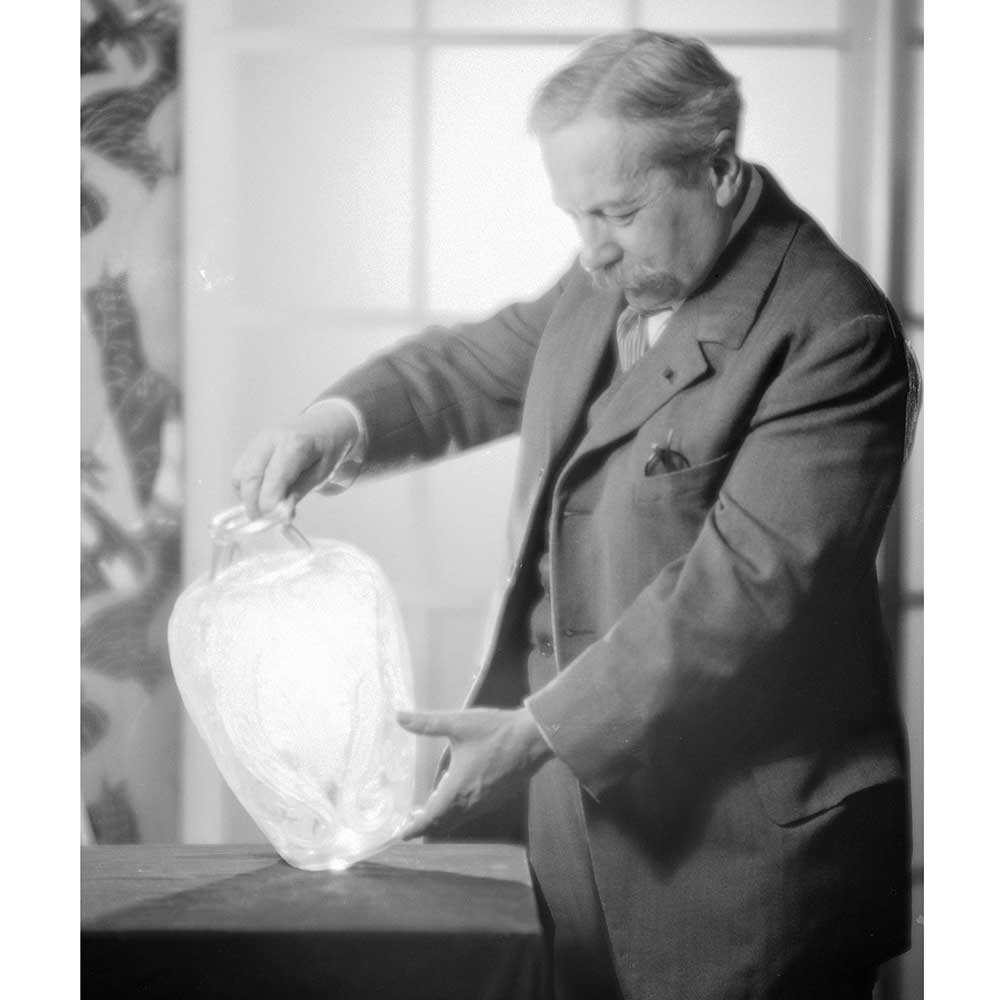
René Lalique
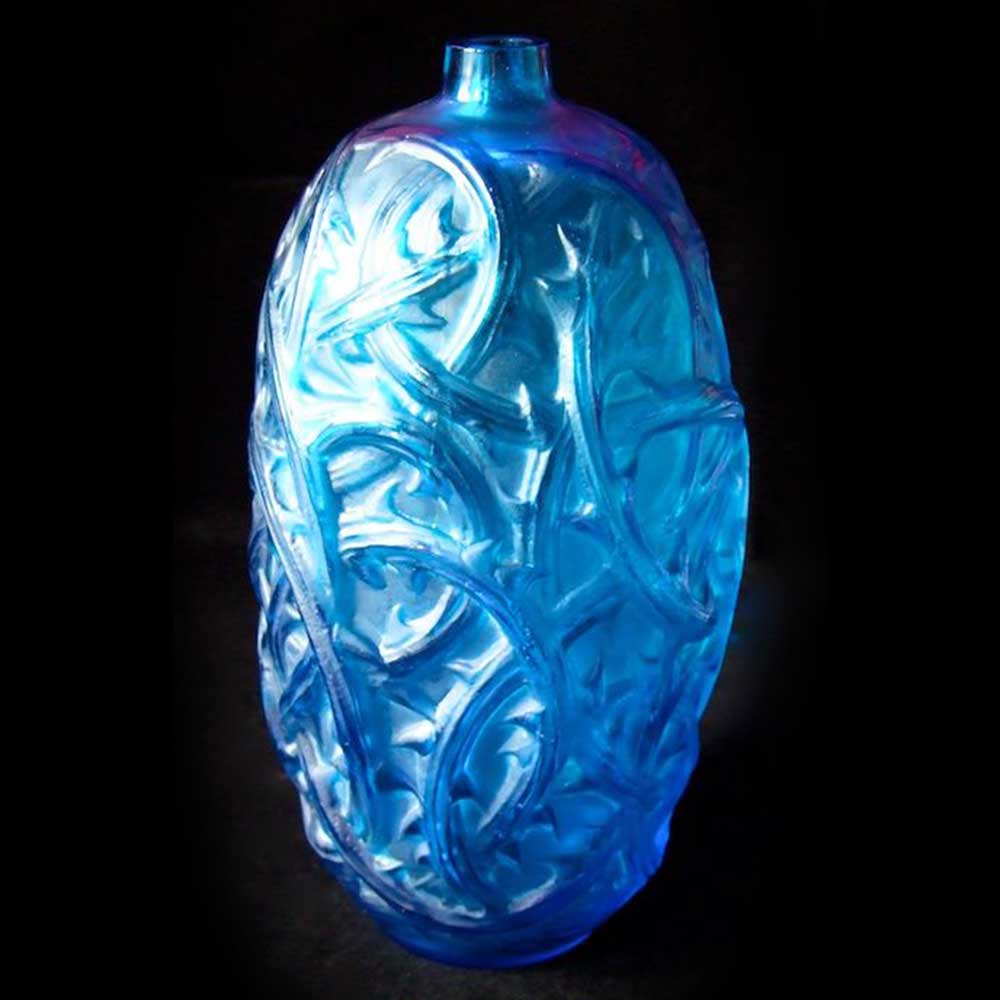
Lalique Ronce Vase
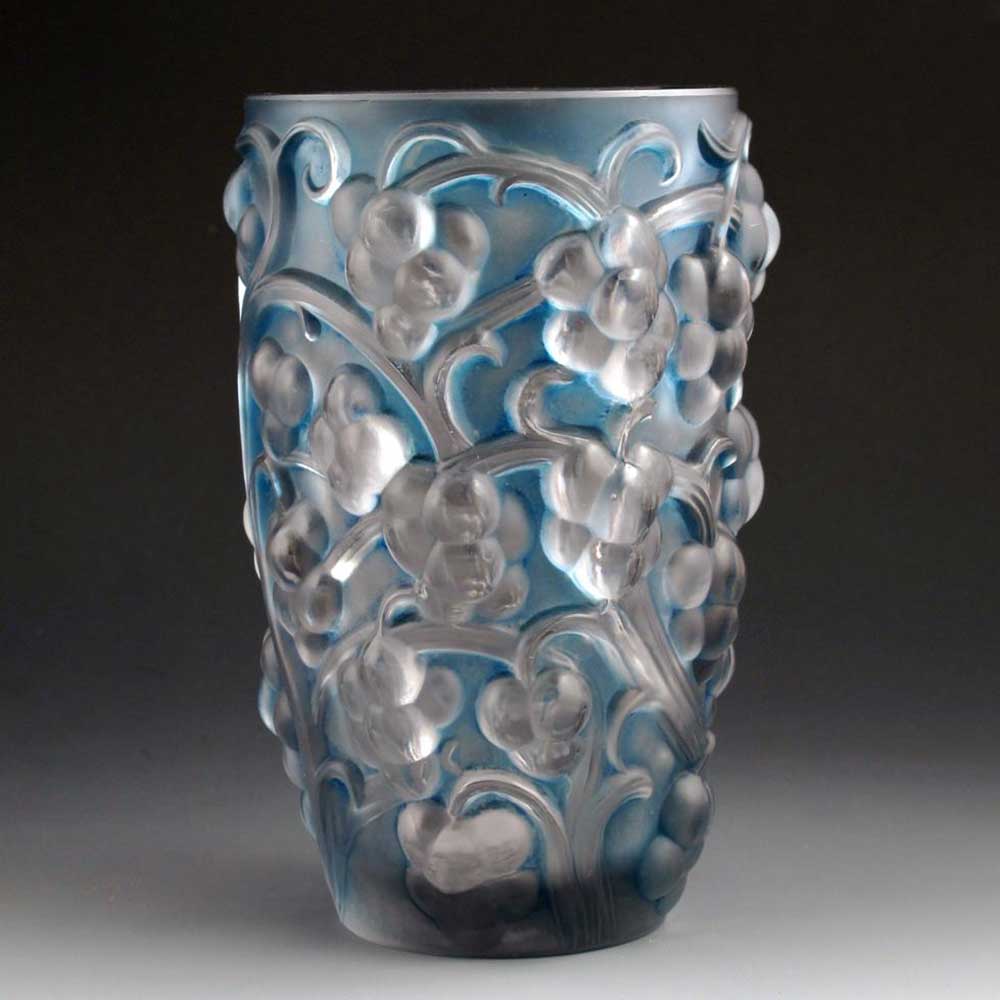
Lalique Raisins Vase
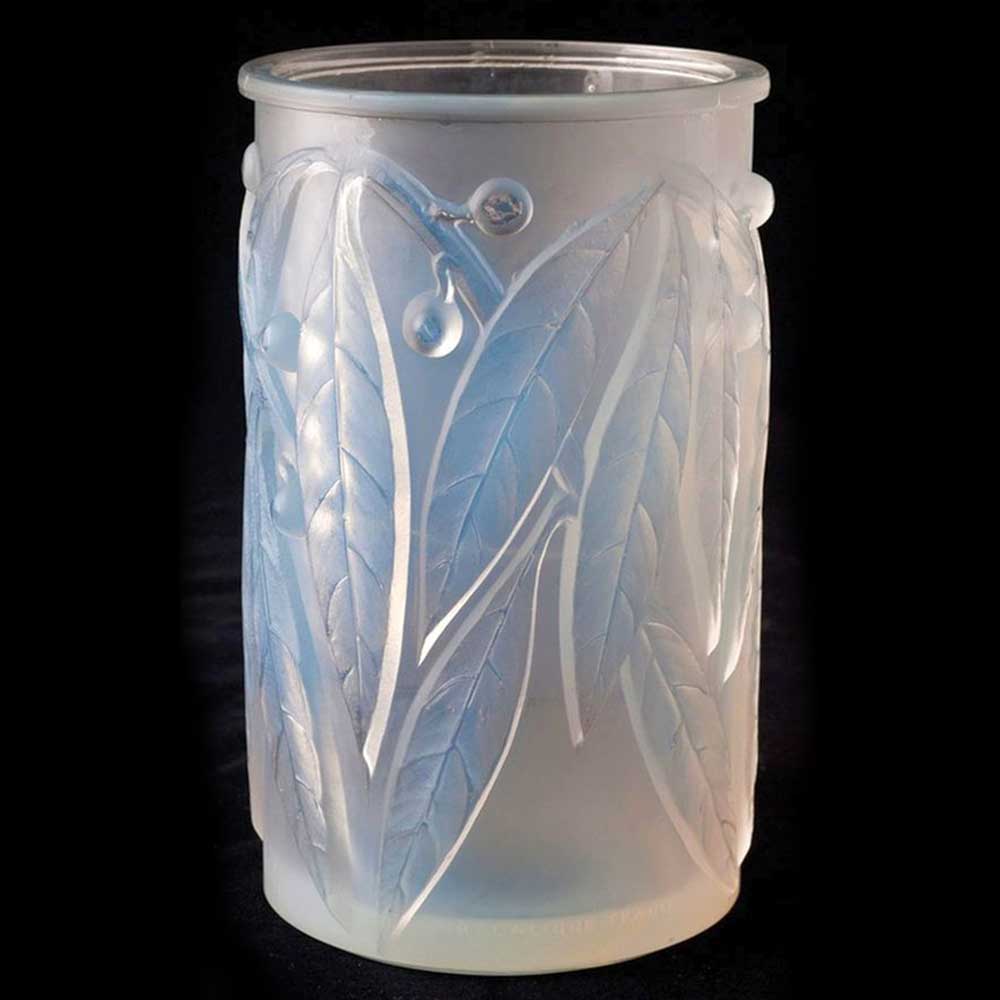
Lalique Mistletoe Vase
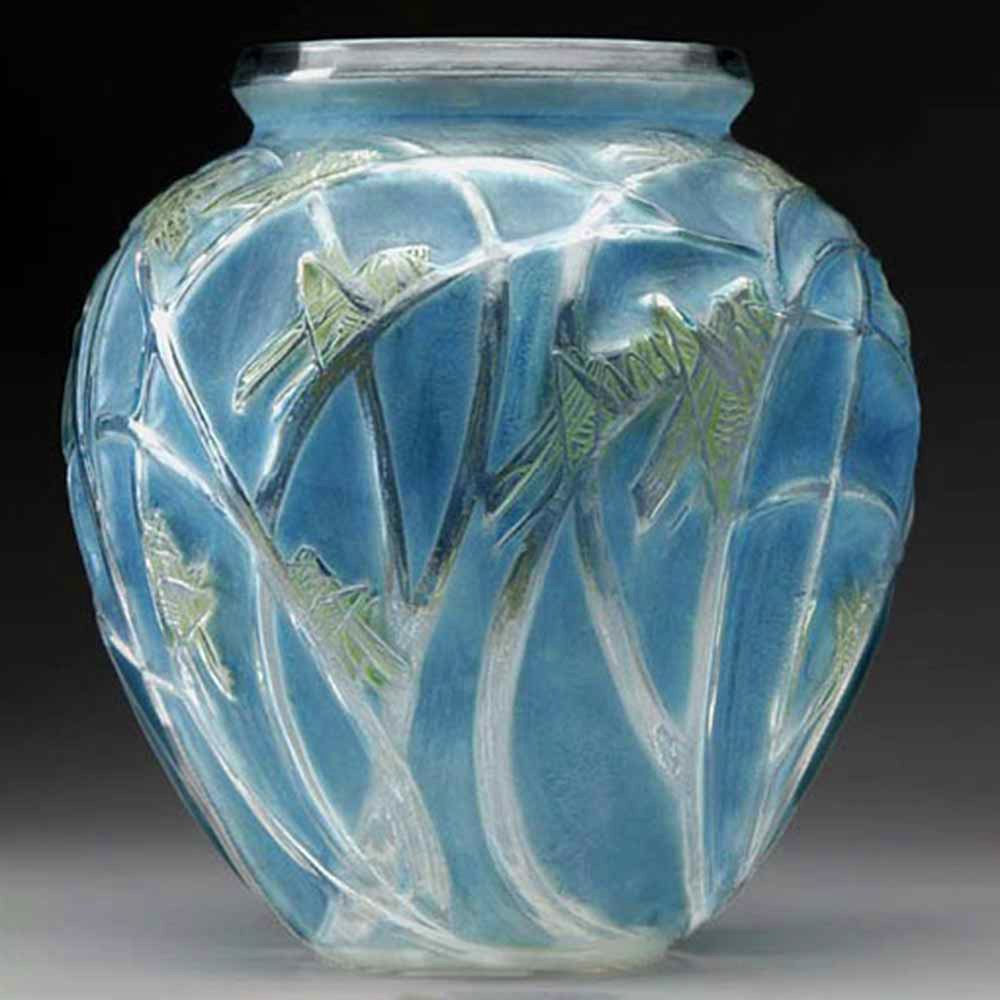
Lalique Sauterelles Vase
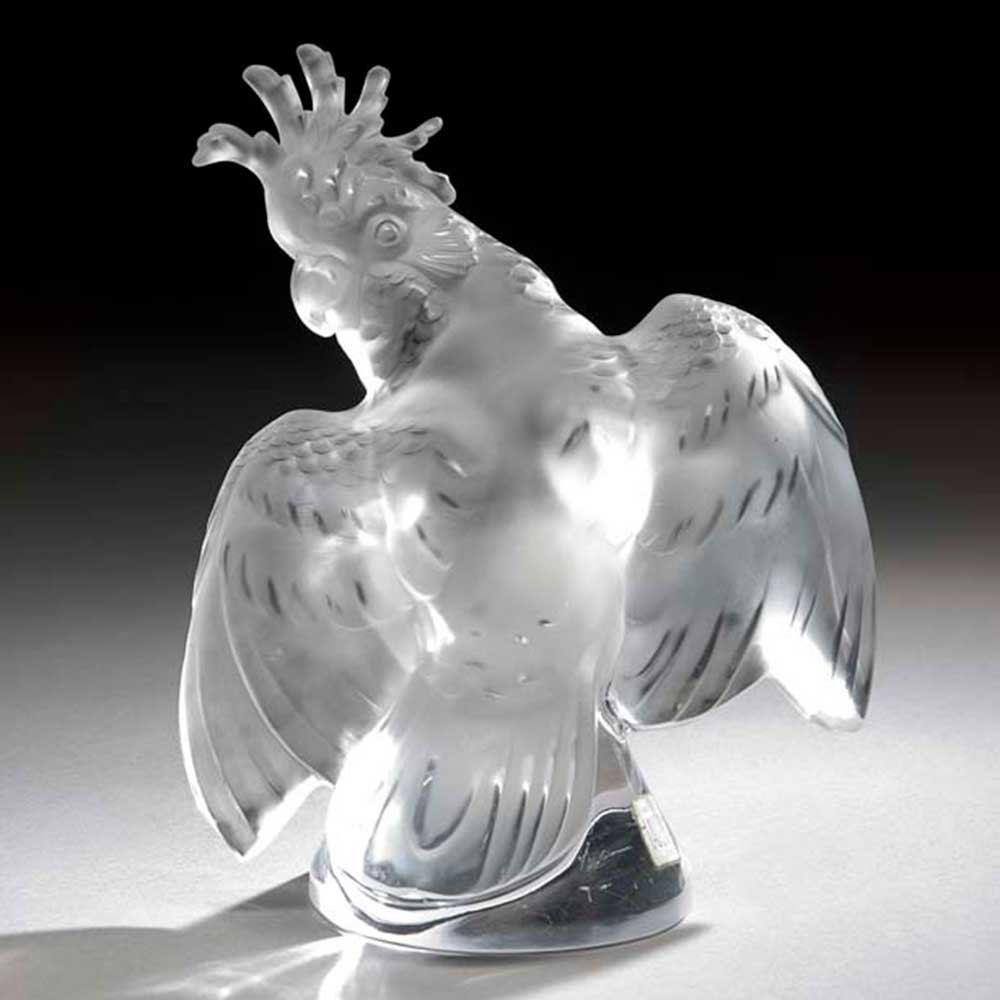
Lalique Parrot
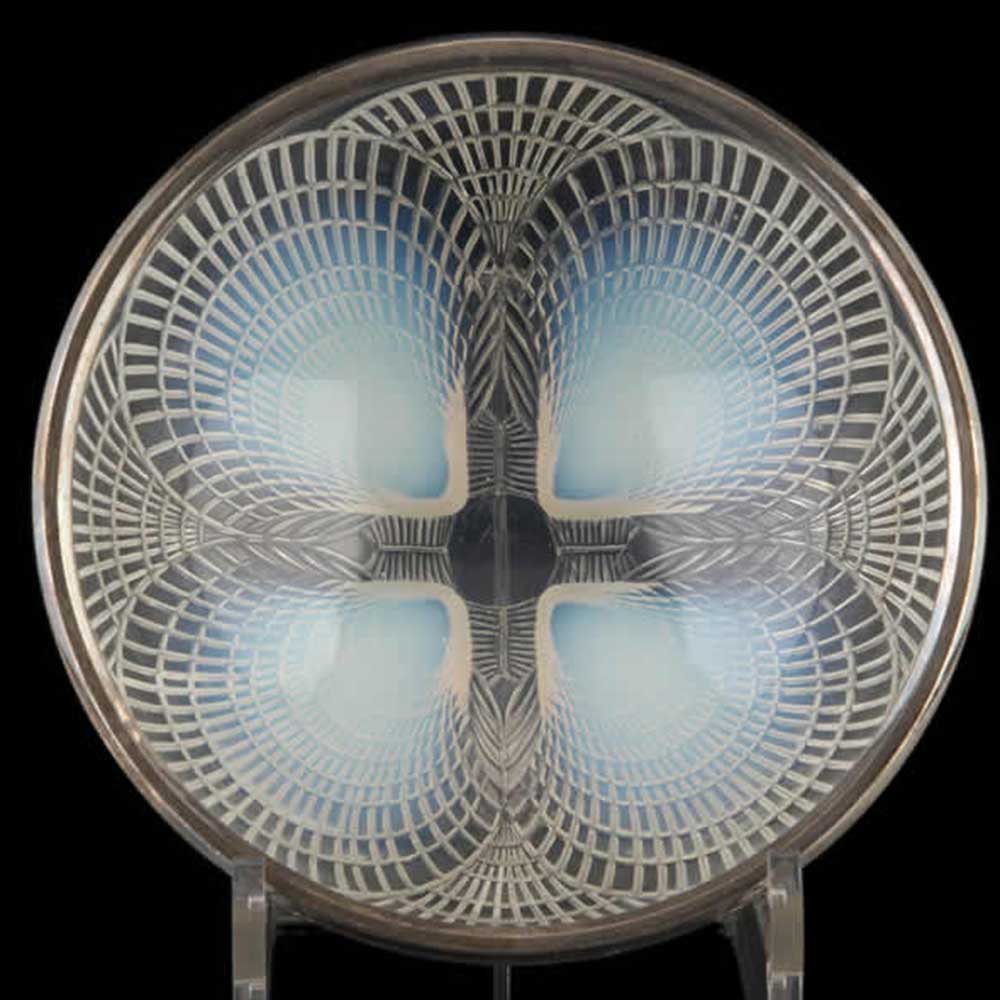
Lalique Coquilles Plate
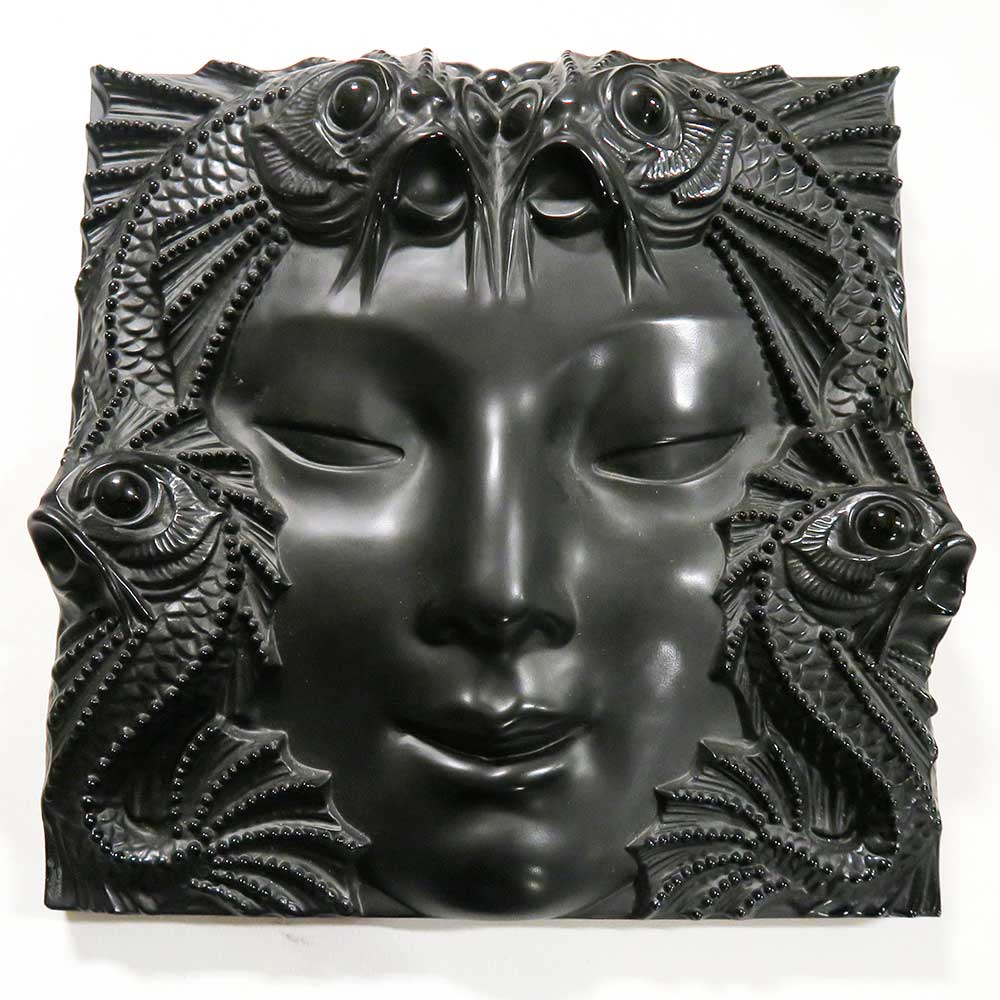
Lalique Fontaines Poissons
"I look, I observe: the woman, the child, the flight of a bird . . . a tree harmonious in the light like a fish in water; suddenly, the harmony of a form, a pose, a gesture, a movement, imprints itself in my mind and does not leave, it combines with other compositional elements that I have seen; when this has been mulled over for a long time in my mind, the work is ripe, and I have only to pick it." -René Lalique
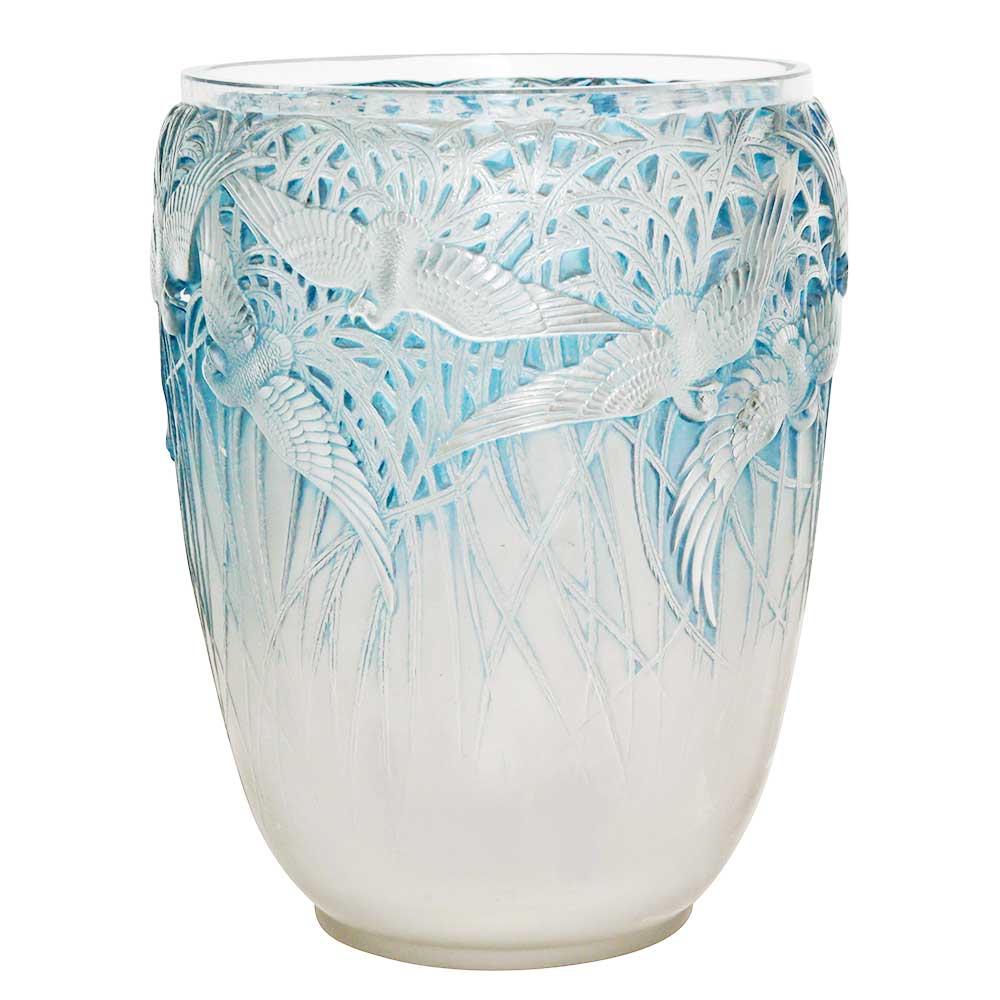
Lalique Aigrettes Vase
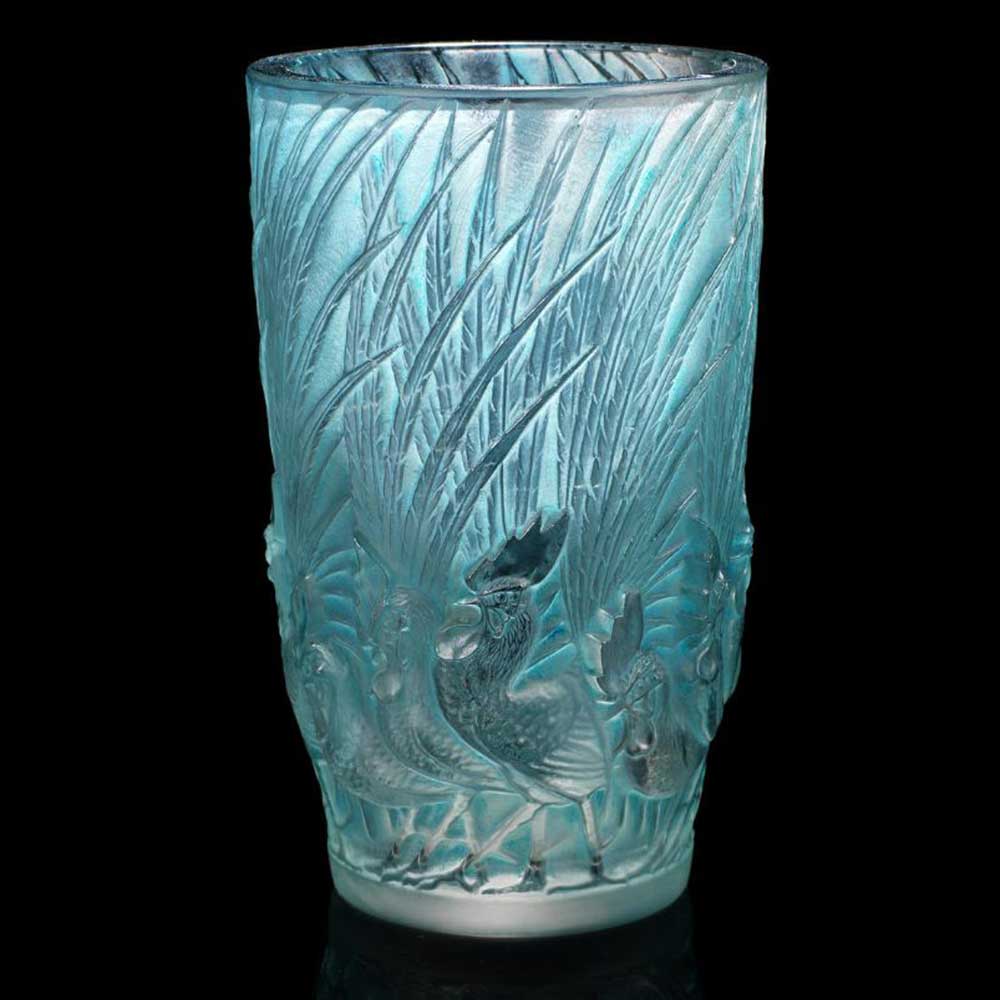
Lalique Coqs et Plumes Vase
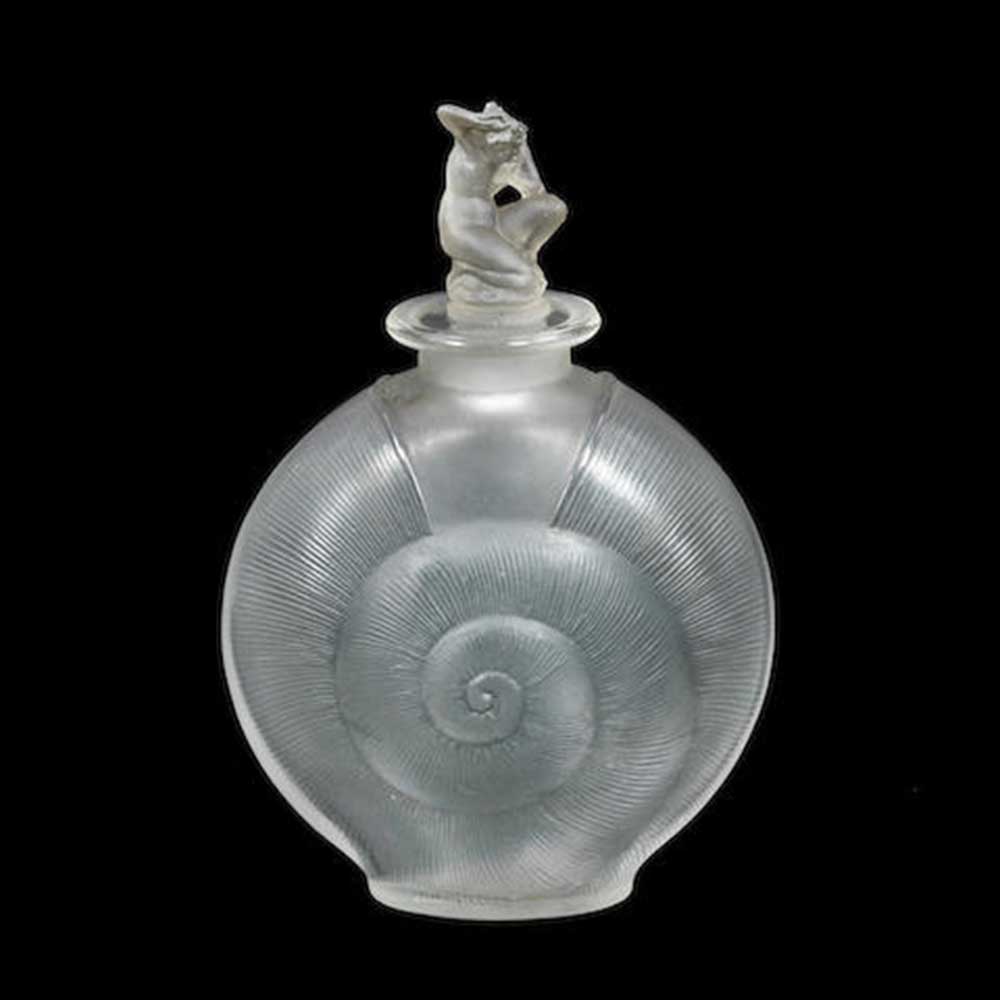
Lalique Amphitrite Perfume Bottle
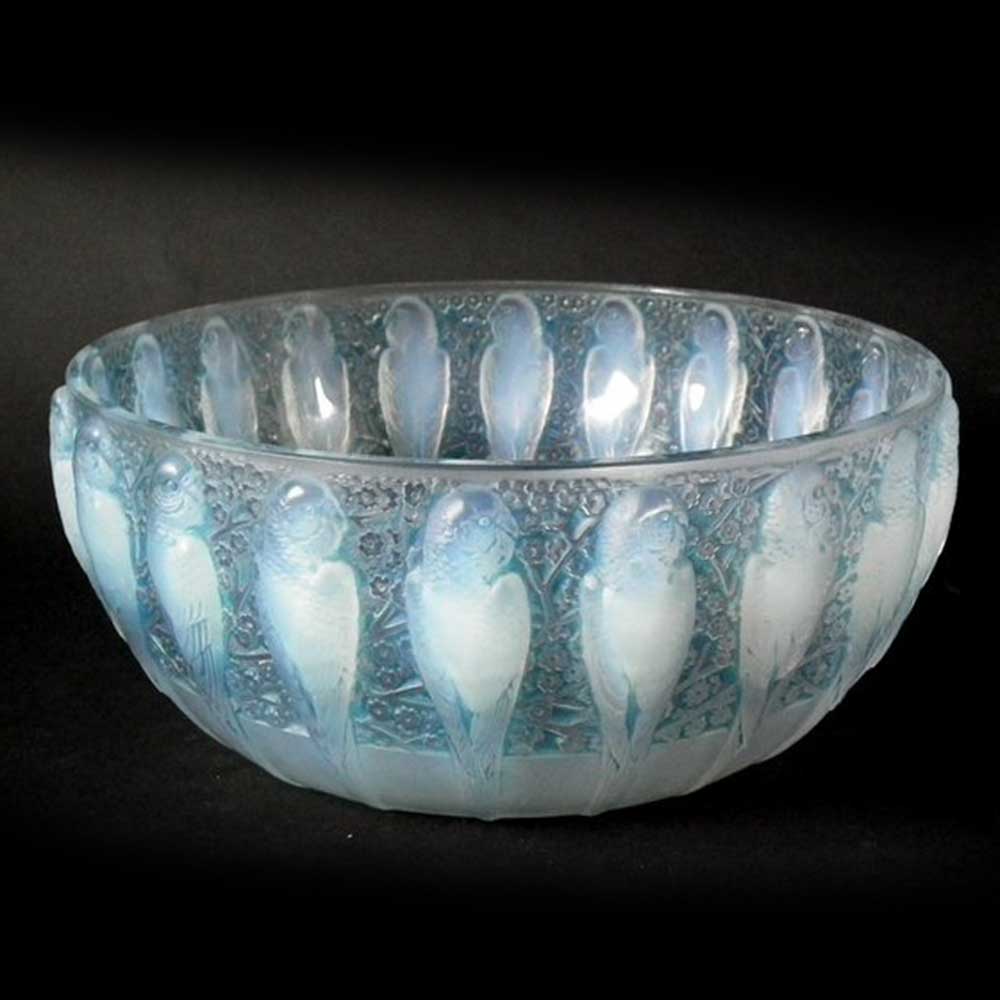
Lalique Perruches Bowl
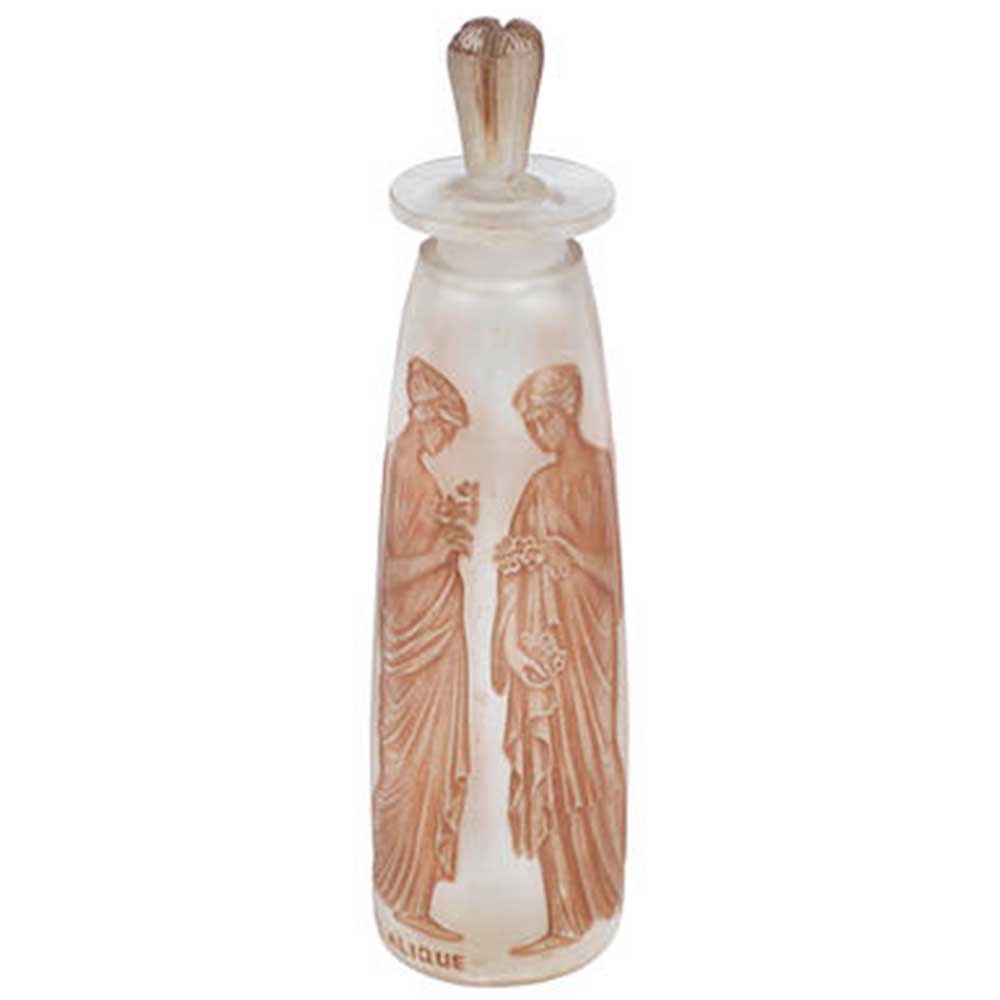
Lalique Ambre Perfume Bottle
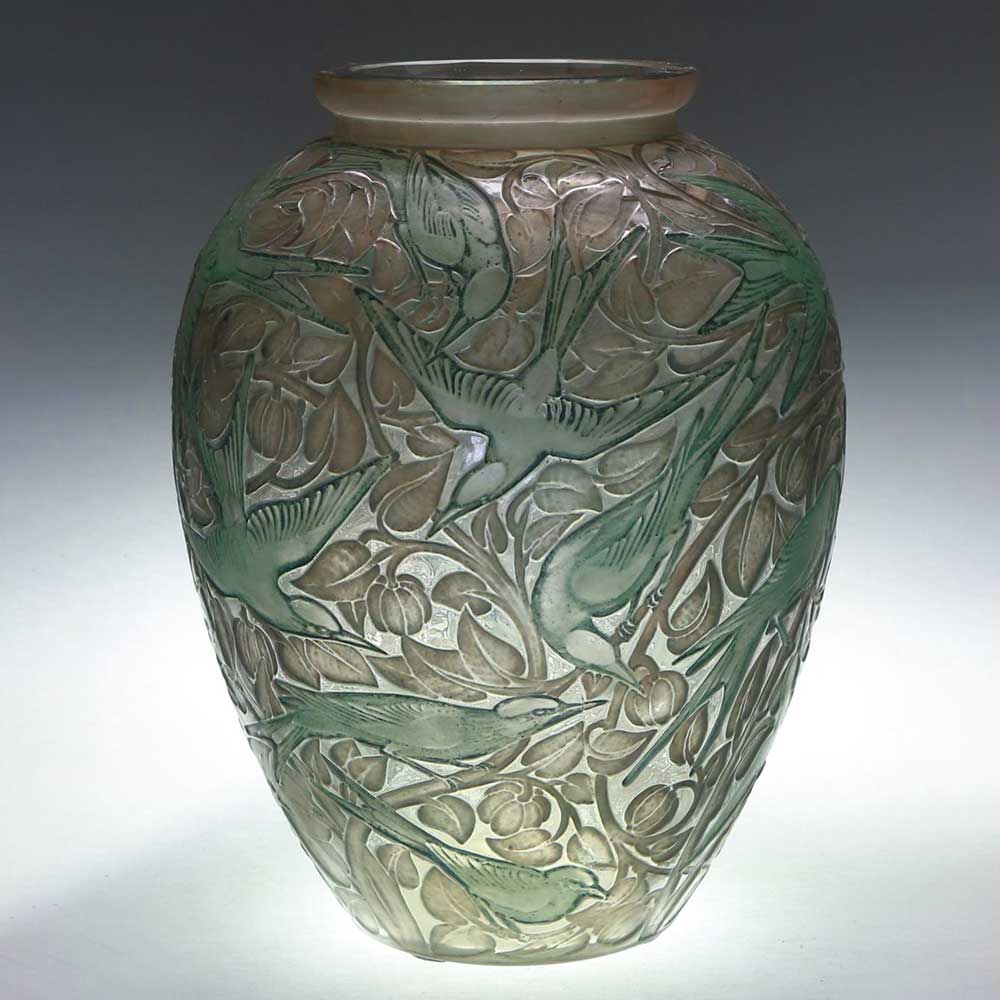
Lalique Martin Pecheurs Vase
"Glass is a wonderful substance. Everything makes it an incomparable plastic medium in the hands of an ingenious artist, offering his imagination and talent almost limitless scope for discovery." -René Lalique
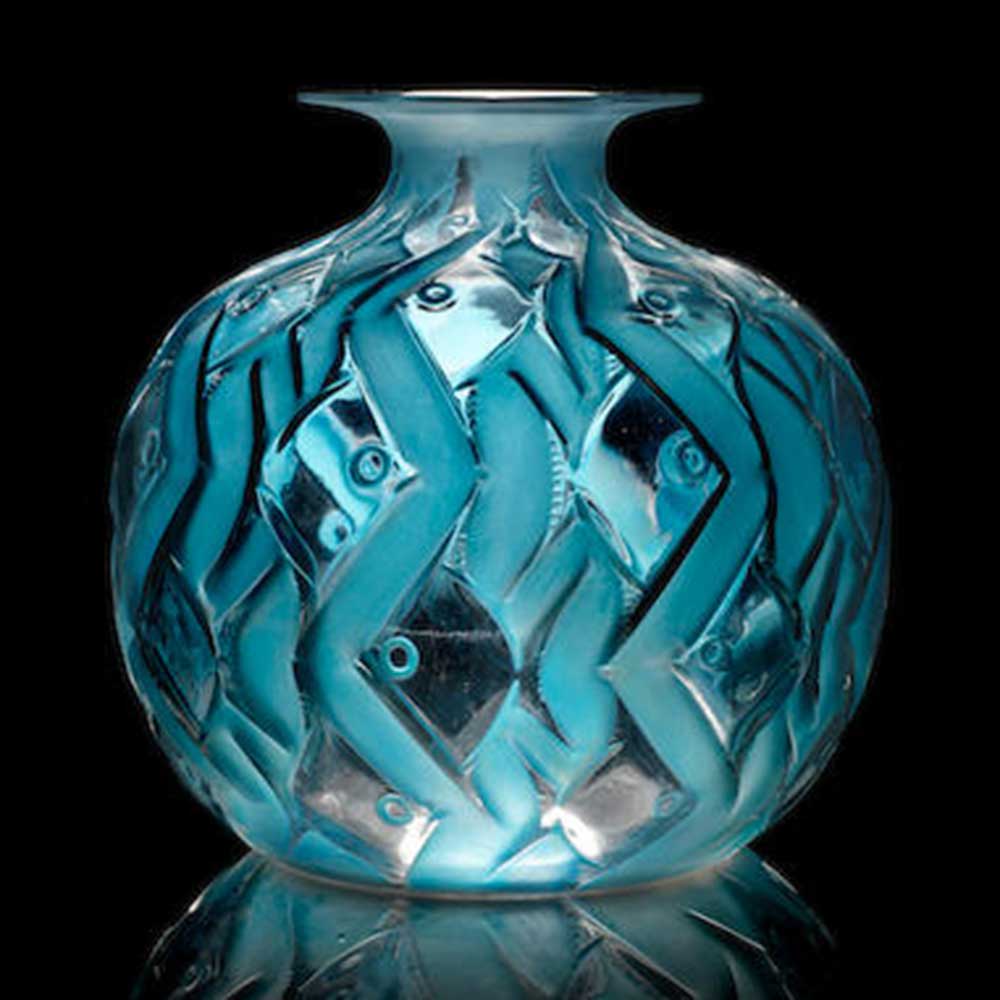
Lalique Penthievre Vase
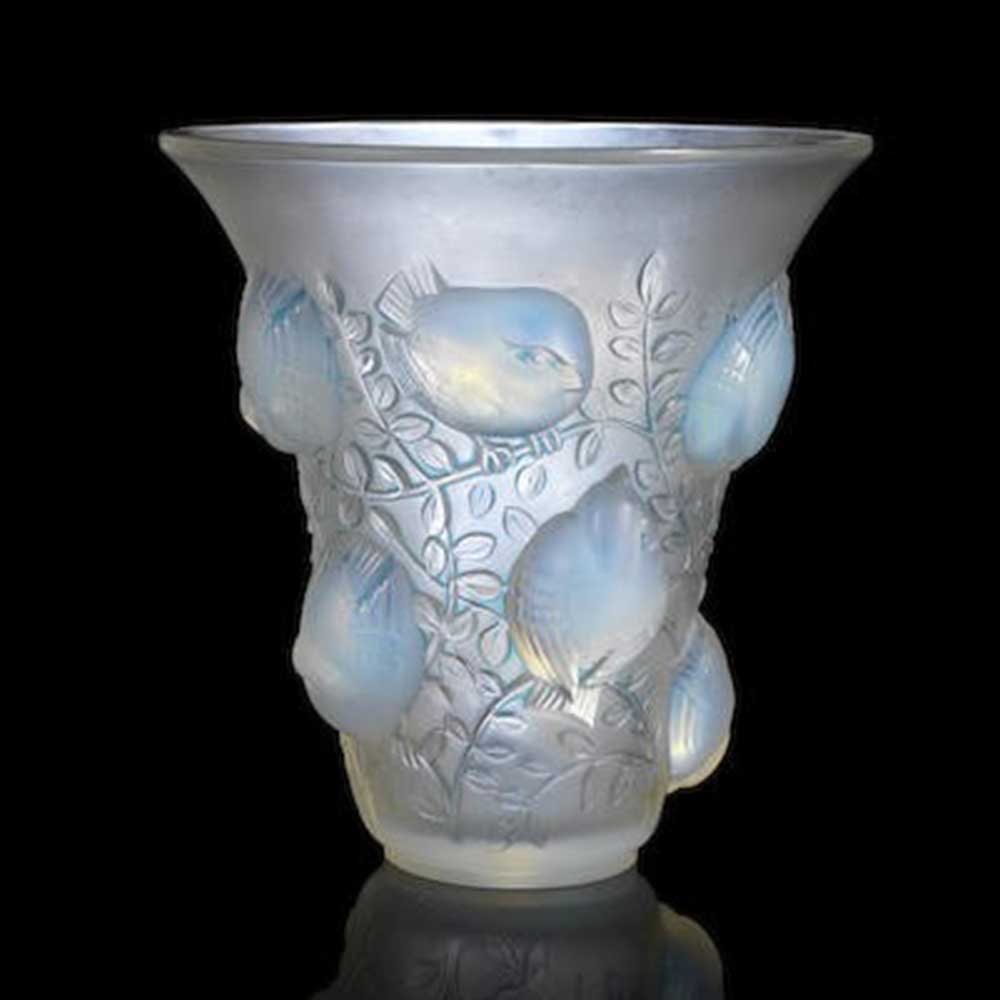
Lalique St. Francois Vase
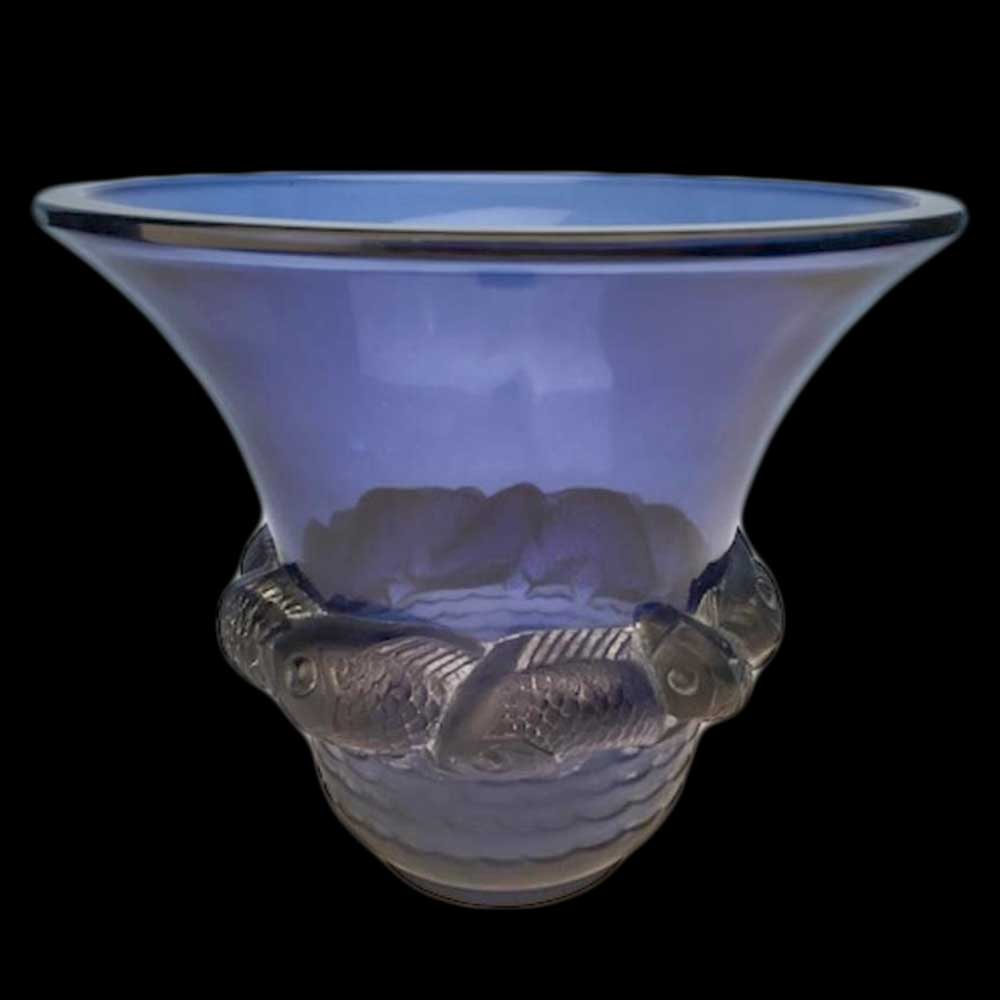
Lalique Piriac Vase
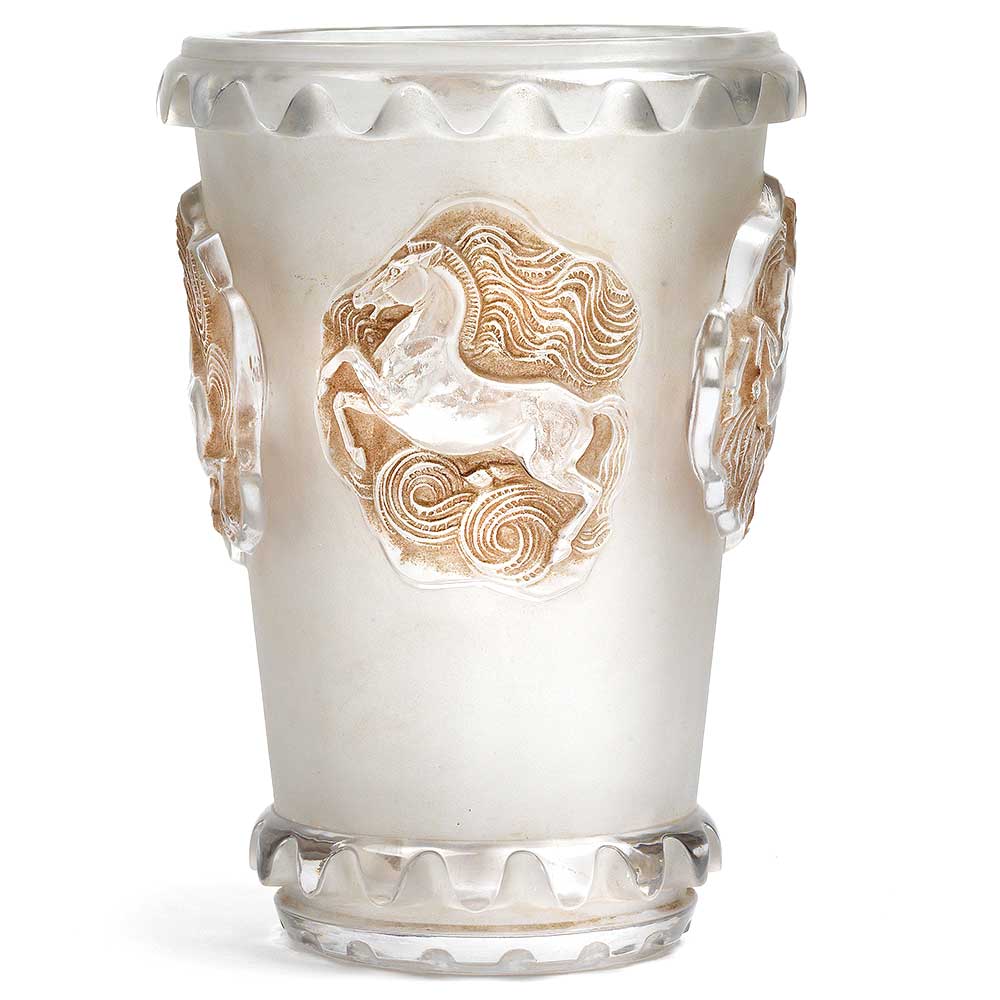
Lalique Camargue Vase
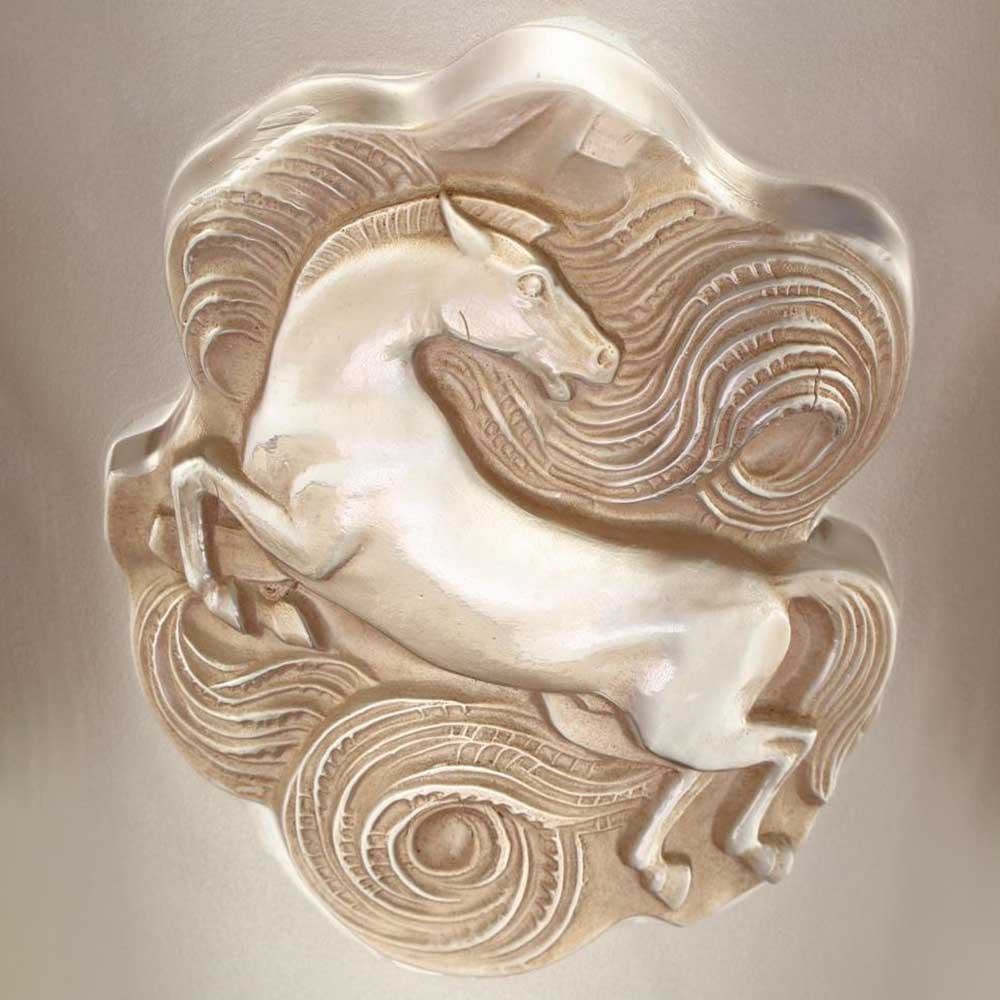
Camargue Vase detail
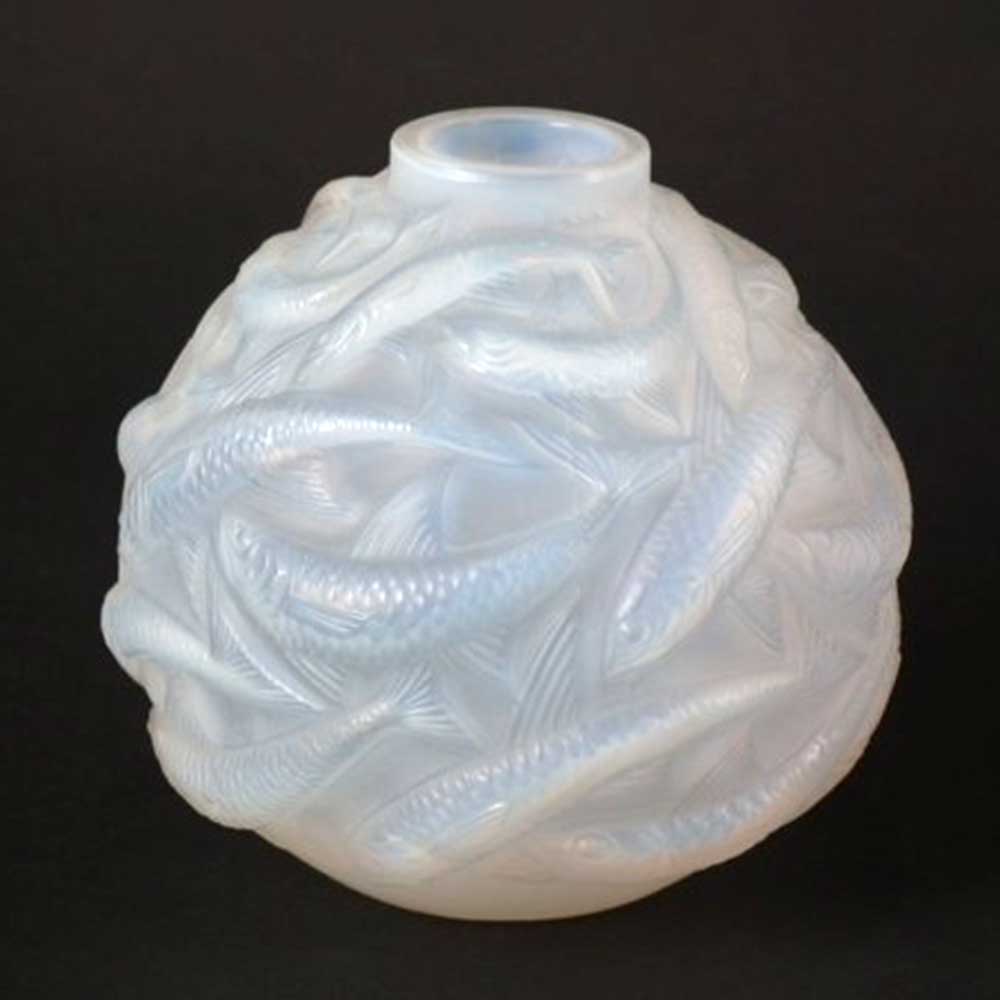
Lalique Oleron Vase
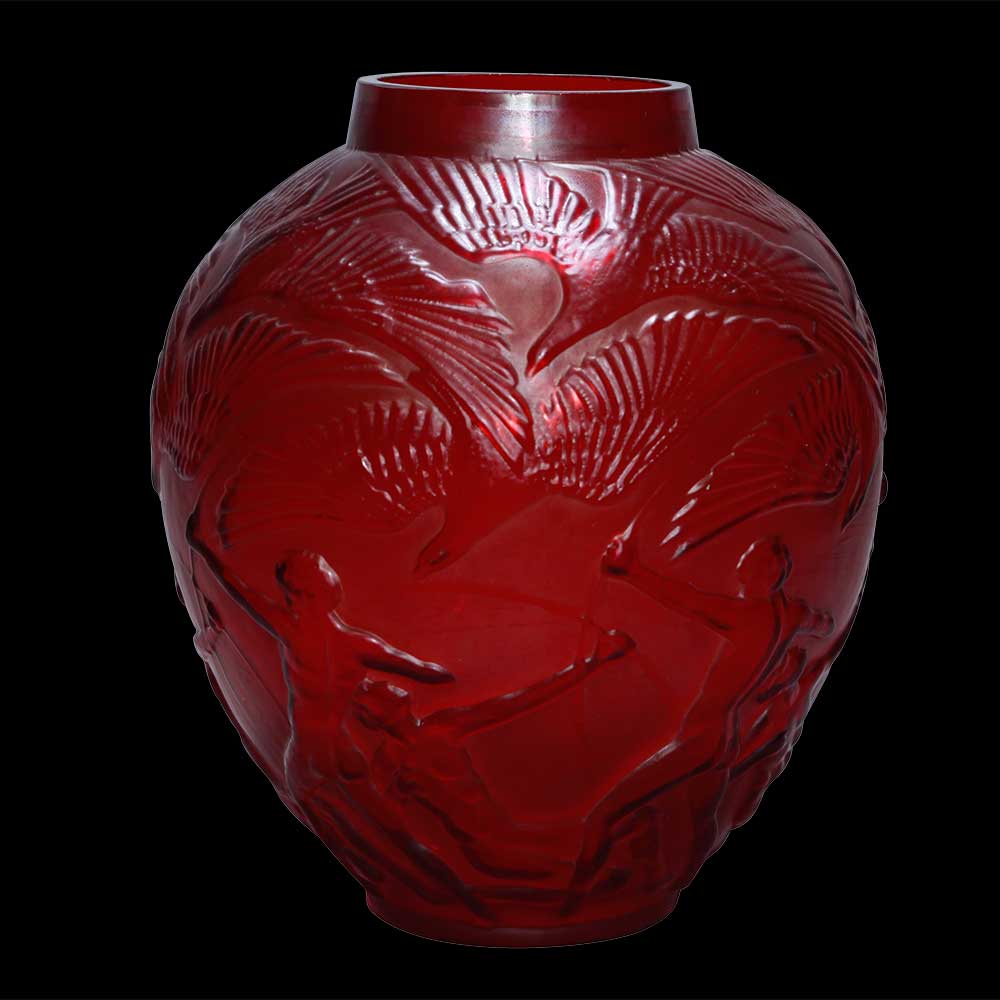
Lalique Archers Vase
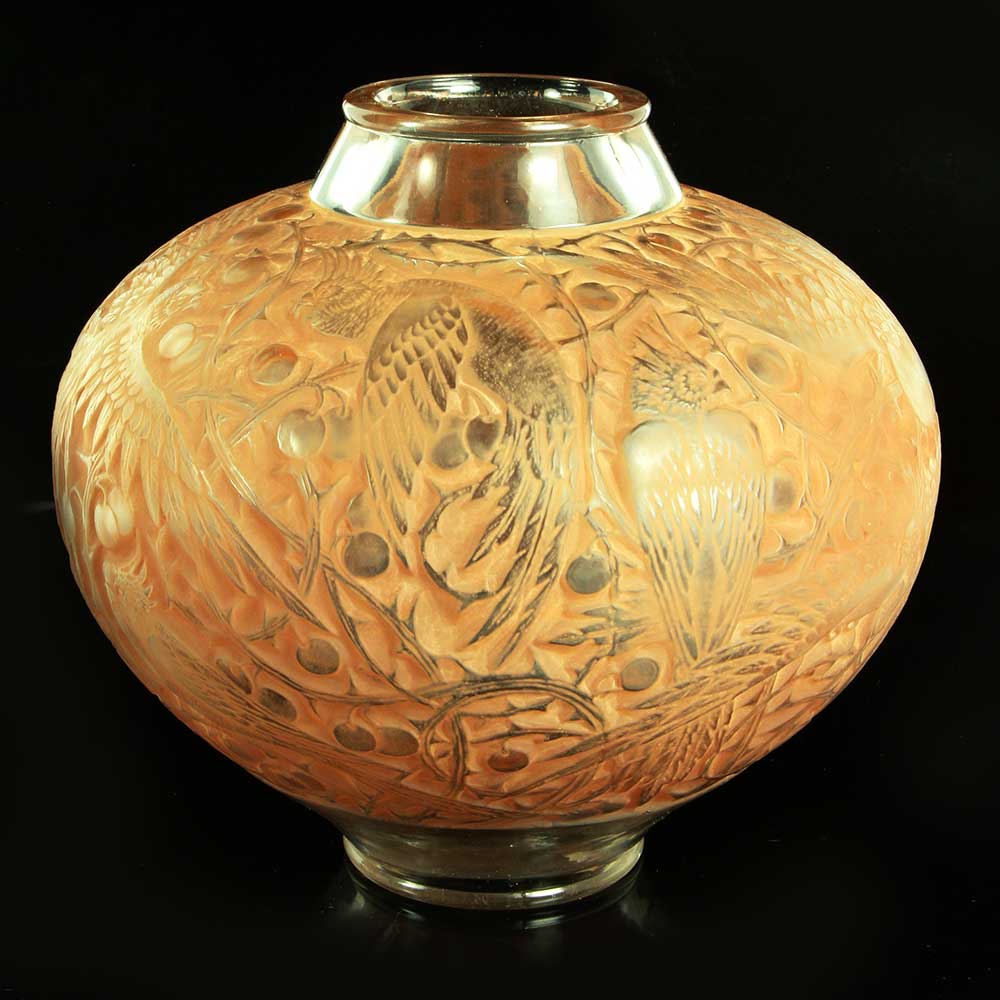
Lalique Aras Vase
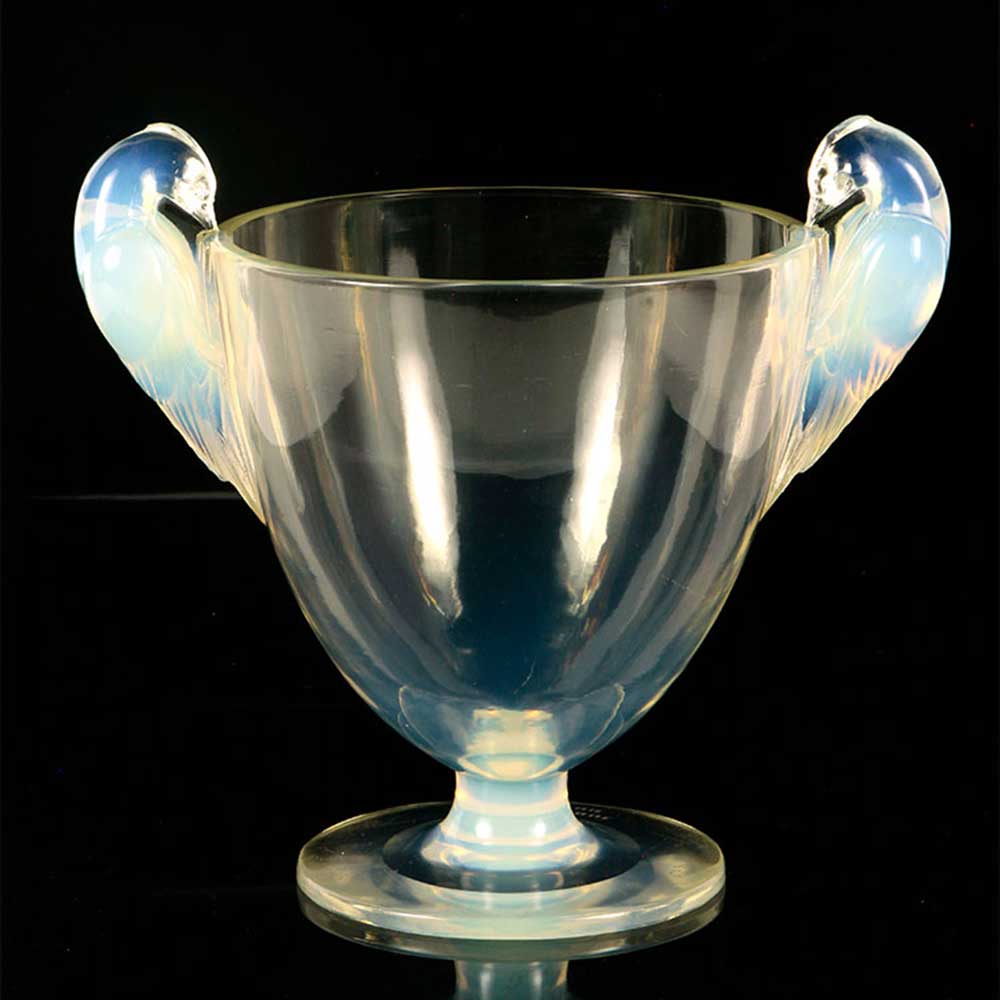
Lalique Ornis Vase
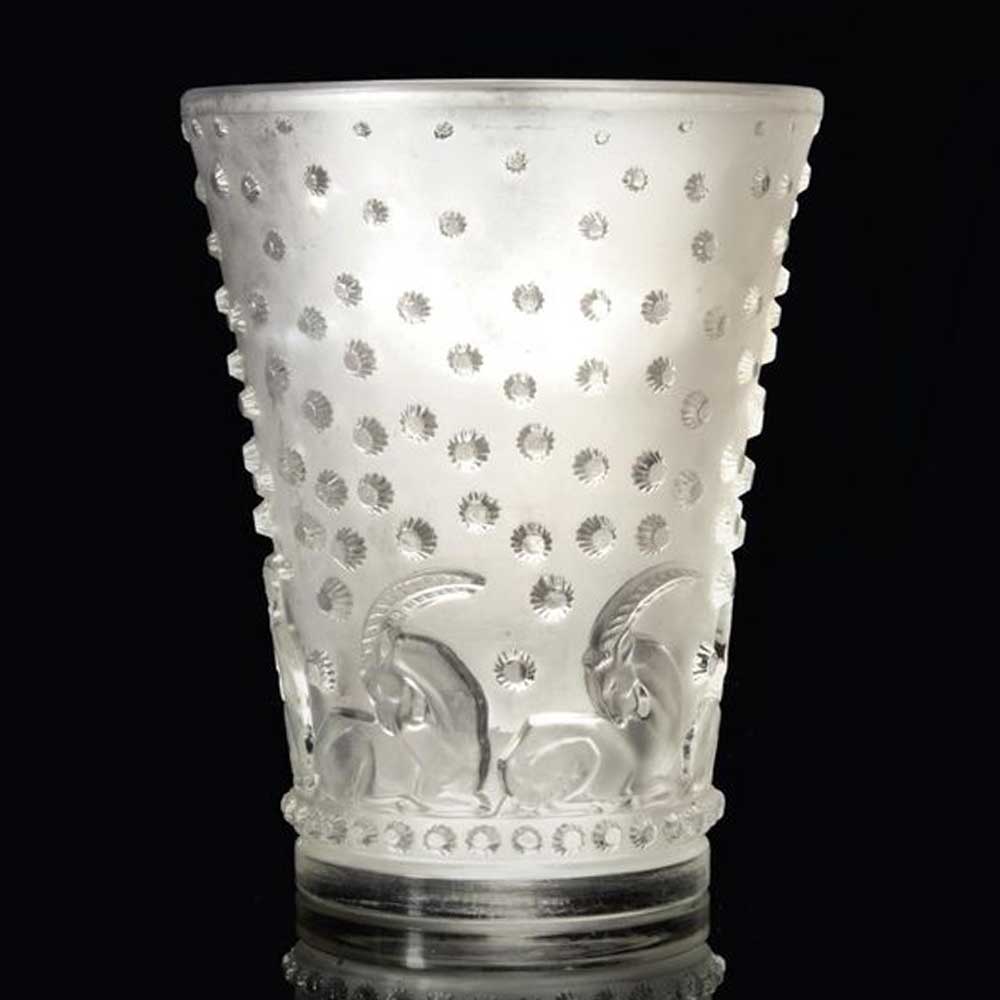
Lalique Ajaccio Vase
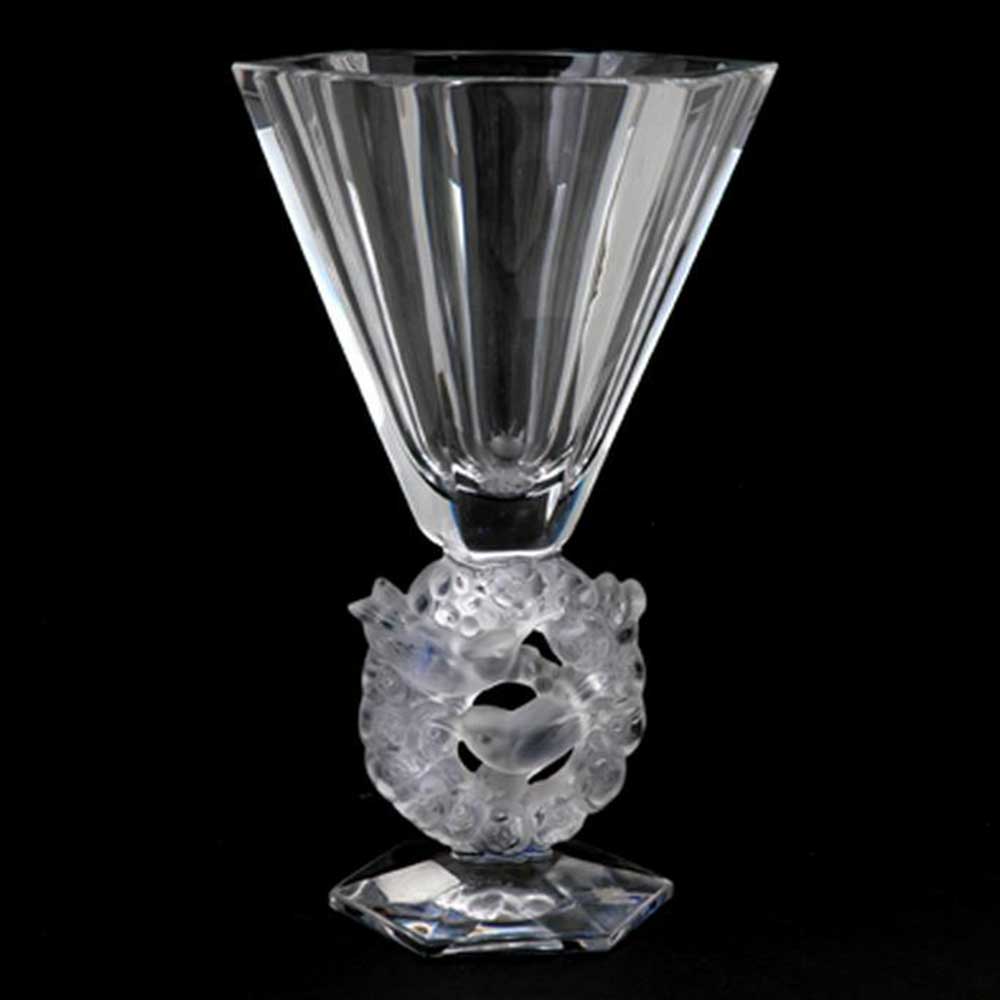
Lalique Mesanges Vase
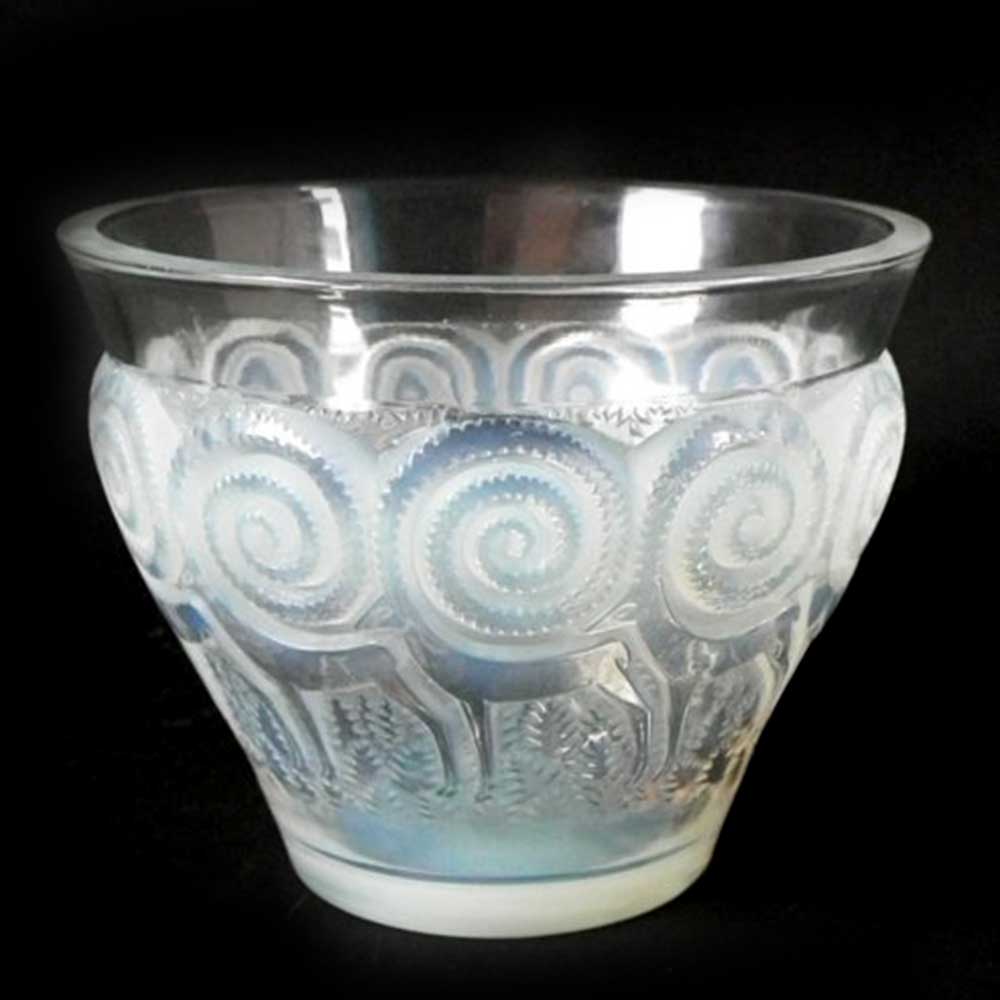
Lalique Rennes Vase
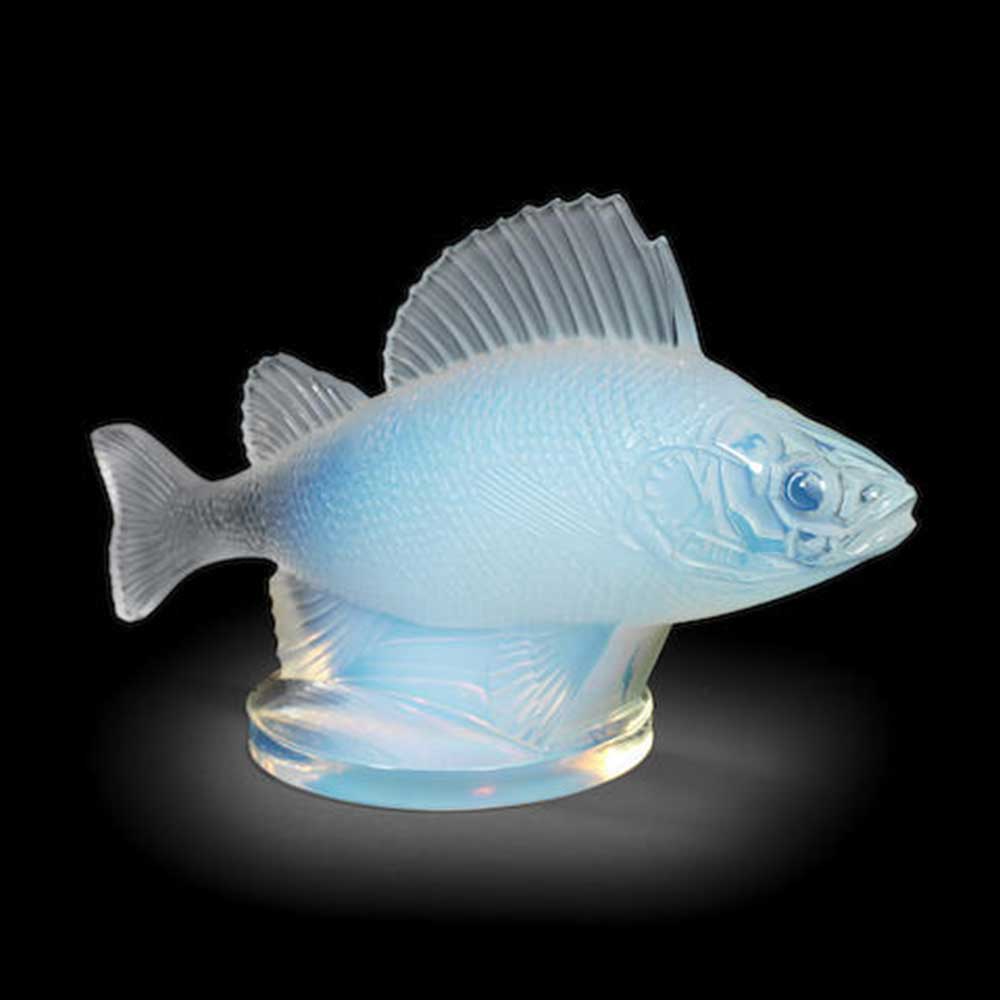
Lalique Perche Car Mascot
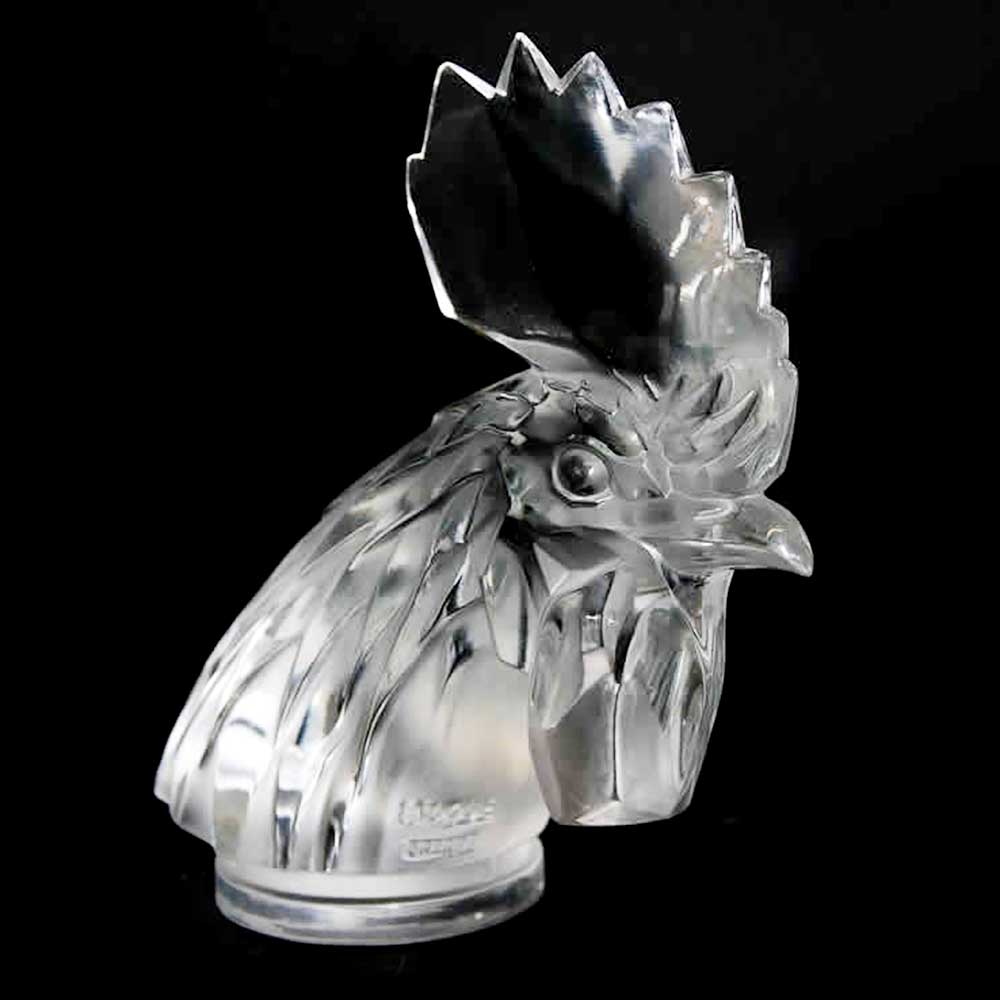
Lalique Tete de Coq Car Mascot
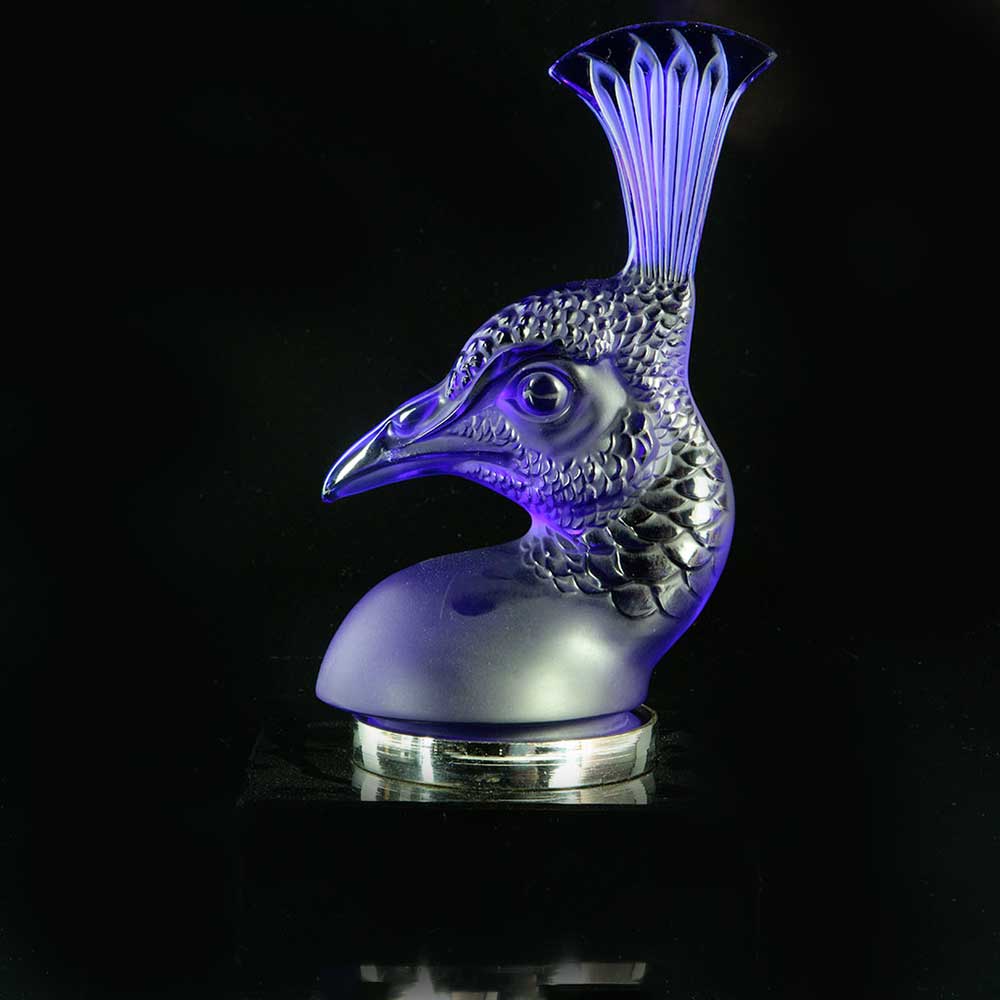
Lalique Peacock Car Mascot
Read more about studio glass...
Studio Glass - Allure of Lalique
Studio Glass - Art Deco Glass
